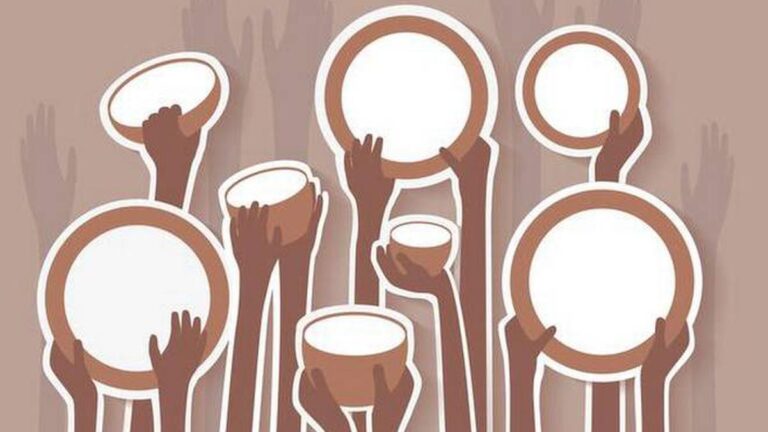TThe release of the 2022-23 Household Consumption and Expenditure Survey (HCES) fact sheet by the National Sample Survey Office (NSSO) has prompted a number of researchers to estimate trends in poverty and inequality. Some of these studies also discussed data comparability and measurement issues.
Trends in poverty and inequality
Some argue that estimates based on fact sheets are provisional in the absence of sector-level data. Although unit-level data provides a more accurate estimate than the average indicated by factsheet deciles, poverty figures based on factsheet data may not differ significantly from unit-level data . Therefore, data from factsheets can be used to estimate poverty and inequality.
The estimated poverty rate will decline from 29.5% in 2011-12 to 10% (1.77 percentage points per year) in 2022-23, and from 21.9% in 2011-12 to 2022-2022, based on the Rangarajan Committee poverty line. It dropped to 3% (1.72 points) in 2023. % points/year) is based on the Tendulkar Committee poverty line. Considering the previous period, the poverty estimate based on the Tendulkar Commission poverty line decreased from 37.2% in 2004-2005 to 21.9% in 2011-2012 (2.18 percentage points per year).
Inequality estimates provided by Subramanian show that from 2011-12 to 2022-23, the rural Gini index declined from 0.278 to 0.269 (a drop of 0.009 percentage points). In urban areas, it went from 0.358 to 0.318 (down 0.04 points). Bansal et al also show that the Gini coefficient for rural areas has decreased from 0.284 to 0.266. In the city, from 2011-12 he dropped from .363 to .315 in 2022-23.
This means that poverty decreased significantly from 2011-12 to 2022-23, although the rate of decline was lower than in the period 2004-05 to 2011-12. Inequality decreased from 2011-2012 to 2022-23, especially in urban areas. Note that all of these estimates vary depending on where the poverty line is drawn.
NSSO has changed the reference or recall period for data collection over time to improve consumption reporting. Three consumption estimates are available depending on the recall period for different types of expenditures: mixed reference period (MRP); and modified mixed reference period (MMRP).
Experts say that by changing the base period for each item on which MMRP estimates are based, they can expect to obtain estimates that are closer to the true values. The Tendulkar Committee estimated the poverty rate based on his MRP for 1993-1994 and 2004-2005. The Planning Commission used the same methodology and MRP to estimate poverty rates for 2009-2010 and 2011-2012. Therefore, the poverty estimates for 2022-2023 (based on the MMRP) are not strictly comparable with earlier estimates. However, the Rangarajan Committee used his MMRP to estimate the poverty rate for 2009-2010 and 2011-2012. These estimates are comparable to those for 2022-23. For ease of comparison, combinations of recall periods that may be considered appropriate cannot be waived. You may have to deal with this issue when comparing long periods of time.
For data from 2002 to 2023, changes were made to the methodology, including expanded coverage and multiple visits. The changes may result in better estimates but raise comparability issues.
measurement problems
Measurement issues related to the poverty line are also under discussion. “The Tendulkar Commission had made it clear that poverty lines based on calorie standards were no longer appropriate,” Mohanan and Kundu said. The expert group (Tendulkar) did not construct a poverty line. The government adopted the officially measured urban poverty line for 2004-05 based on the methodology of the Expert Group (Lakdawala) and converted this poverty line based on URP consumption into MRP consumption. It regarded the urban poverty line as derived from the Lakdawala line, and derived the rural poverty line from there. Since the Urban Poverty Line used by the Lakdawala Committee had calorie standards, the Tendulkar Committee also used these standards indirectly.
In defining a new consumption basket that separates the poor from the rest, the Expert Group (Rangarajan) has identified food elements that address the ability to obtain adequate nutrition and the extent to which consumption expenditures are on essential non-food food groups. should include a normative level. The remaining set of behaviorally determined non-food expenditures. The Group re-estimated the poverty basket and did more than simply update the old basket with new prices.
The poverty line is based on personal consumption expenditures. When public spending is taken into account, the actual happiness of households is higher than that indicated by the poverty line. HCES 2022-23 sought to obtain imputed values for some items of public expenditure. The value of items received by households completely free or at low cost is estimated using appropriate methods. However, when we look at the average monthly expenditure per capita (MPCE), we see that subsidies and free goods given to households account for very little of total public spending. The average MPCE with imputation was only 2.3% higher in rural areas and 0.96% higher in urban areas compared to MPCE without imputation. Public spending on these items is high, so we need a better understanding of their values.
Therefore, poverty has decreased. Inequality in consumer spending has narrowed slightly. Income inequality is usually greater than consumption expenditure inequality. There is no unique way to measure poverty. The higher the poverty reduction rate, the greater the number of poor people.
This is a premium article available to subscribers only.Read over 250 premium articles every month
You have exhausted your free article limit. Please support quality journalism.
You have exhausted your free article limit. Please support quality journalism.
read {{data.cm.views}} out of {{data.cm.maxViews}} Free articles.
This is the last free article.

